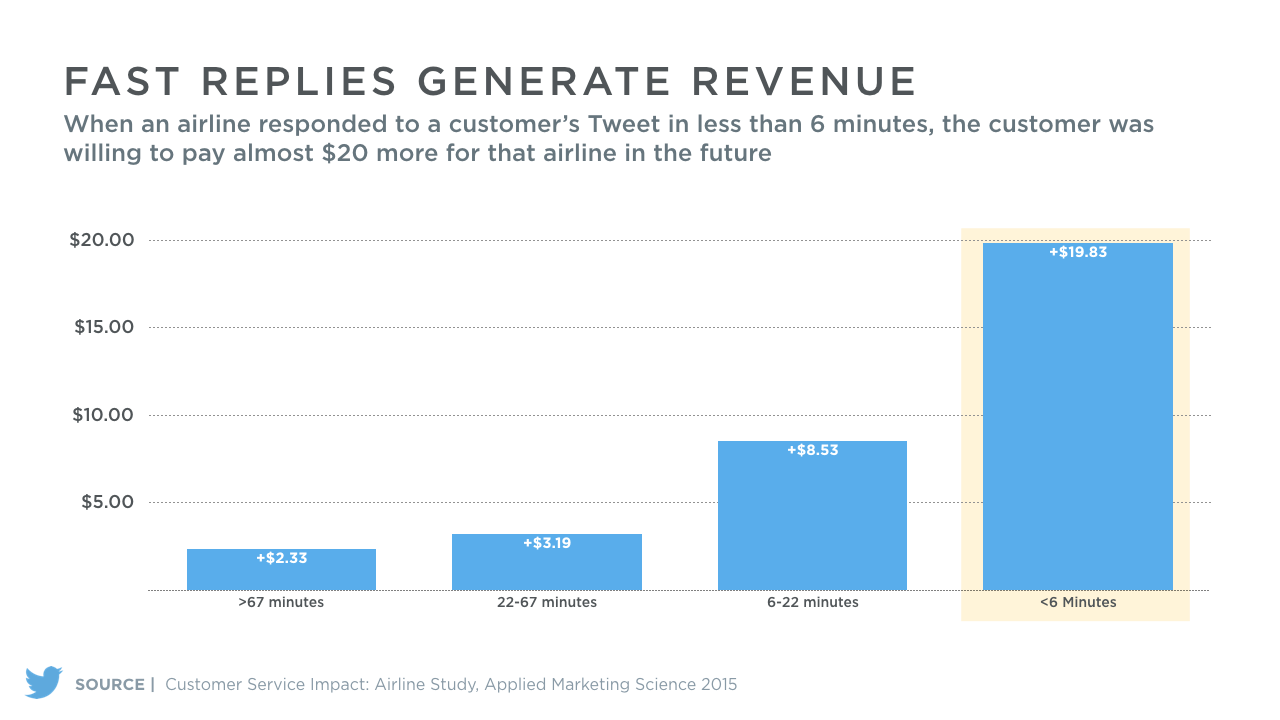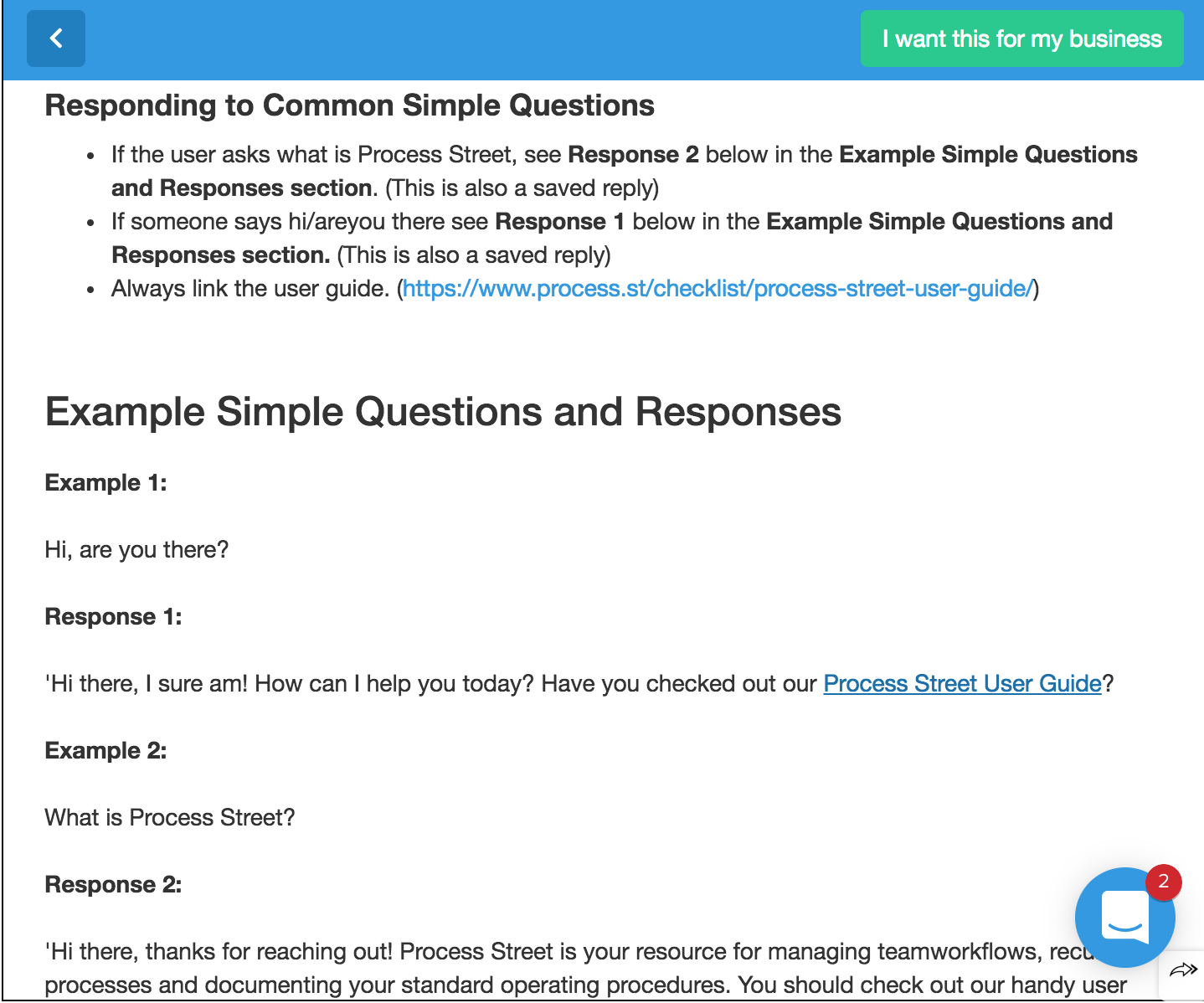
Are you in need of some workflow examples to make your teams smarter?
But what makes a team smart?
Several things do, but powerful workflows are one critical ingredient which makes teams smart.
Teams that use workflows don’t set goals and simply hope to reach them; they create checklists (workflows) to make sure they reach their goals.
No wonder 50% of businesses that use workflow management systems say the results are substantial.
It’s incredible.
Teams that use workflows are super organized and able to perform daunting tasks — no matter the long processes involved.
But what types of workflows should you be using this year?
It’s different for every organization; workflow systems are not always one-size-fits-all. But these nine Process Street workflow examples should give you inspiration for how you can build important systems to run your business with.
Our workflow examples:
- Employee onboarding workflow
- Customer support workflows
- Customer onboarding workflows
- Content marketing or writing workflows
- Podcast publishing workflows
- Request and approval workflows
- Travel workflows
- Content promotion workflow
- Standup meeting workflows
1: Employee onboarding workflow
“Who’s talking to our job candidates?”
“When are they doing that?”
“Who else is involved in reviewing applications besides HR?”
“By when should a successful candidate be fully on board as a team member?”
These are key factors in a typical hiring process, and setting up a workflow for them ensures important details are not missed along the way. Because when you miss relevant details in the hiring process:
- Candidates are not properly assessed.
- You miss great hires.
- Ultimately, bad hires get onboard — and companies lose an average of $14,900 on every bad hire.
A practical workflow helps you avoid potential hiring mistakes and gets you a stronger and more effective team.
To set up an effective hiring workflow, you’d need a workflow management tool.
It provides you with a checklist to onboard new employees, alongside subtasks in the list, to ensure each stage in your hiring process is effectively managed.
Here’s an employee onboarding workflow from Process Street:
Get the full employee onboarding workflow here.
2: Customer support workflows
55% of customers are willing to spend more money with a company that guarantees them a satisfying experience.
So if you’re thinking of taking any steps to improve your customer service, you’re making a good call.
One important improvement to make is adding a comprehensive customer support workflow to your customer support arsenal — if you’re not using it yet. It puts your customer reps on the same page, guiding them to deliver great experiences per support request.
More importantly, a customer support workflow helps your team provide fast responses. And customers love support that isn’t only of high quality but also fast.
For example, when an airline responds to a customer’s Twitter support requests in less than six minutes, that customer is willing to pay them almost $20 more in the future for the same or enhanced type of service.

The opposite happens when buyers receive poor support; 89% of customers stop patronizing a business after experiencing poor customer service.
This is where customer support workflows come in handy. They make sure that your support agents provide quick answers to common questions.
A customer support workflow looks something like this:
Get a comprehensive customer support process checklist.
In fact, with a workflow like this, your customer service responses would be slower only when your agents face weird (the first-of-its-kind type of) questions.
For example, an unusual question that could slow down the response speed for customer reps at Tesco could be something like this:

The question could have thrown them off-balance for a bit, and their response might be slower than normal due to the oddness of the question.
But once you answer an uncommon question like this for the first time, it becomes a common one going forward.
You should save it in your workflow (and you can do this in Process Street) so your agents can quickly search and find it when next they need to.

With ready-made answers to customer support questions like this in your standard operating procedure (workflow), you can provide fast and accurate replies to customers or leads.
You’d only need to enter #something (say #billing, for example) in Process Street, and it shows all the questions and replies your team has dealt with on the topic.
3: Customer onboarding workflows
Once users or clients sign up for your product or service, your customer onboarding workflow greatly impacts their decision to either stay or not.
HubSpot’s ex-product manager Dan Wolchonok surveyed the users who churned in the first week on Sidekick (now HubSpot Sales) and discovered that 60% of them churned because they simply couldn’t see the product’s value or understand how it works.
Customer onboarding workflows are critical.
They help you have a repeatable system that helps you retain customers all the time. Here’s an example of a customer onboarding workflow from DoubleDutch:
A workflow like this gives every team member a bird’s eye view of your customer onboarding process and shows them what role they’re playing in every customer’s success with your product.
You can create and edit your customer onboarding workflow in Process Street to make sure new customers or users enjoy a great experience as they’re getting started with your product.
And great customer experience boosts revenue. 86% of consumers are willing to pay up to 25% more for better customer experience.
This means as long as your customer onboarding workflow creates a great experience for buyers, they have almost no reason to churn and are even willing to pay more.
4: Content marketing or writing workflows
Content that ranks on Google usually has to meet certain requirements before they do; Brian Dean of Backlinko recently listed fifteen of them.
Besides the SEO conditions to meet for every post, you also need to follow key content marketing and copywriting techniques to ensure you’re engaging customers and driving conversions.
With so many conditions to follow per content, setting up a well-structured content marketing/writing workflow is a no-brainer.
The workflow may include the following (or more):
- A relevant, high-volume keyword in the headline.
- 2000+ words.
- Focus keywords in at least two subheads in each post.
- An image in every section of the article.
- Image alternative texts.
- Grammar check.
- Publish.
- Build backlinks on at least five authority sites to each article.
- Promote content on online communities and social platforms.
- Get every employee to share.
- Run paid ads on the content.
Putting all of these SEO, copywriting, and content marketing requirements in a checklist or workflow for your content team puts every teammate on the same page.
Plus, it gives them a clear view of what it takes for your content to engage potential customers, rank on Google, and get tangible results.
In a few weeks or months of thoroughly following your checklist, you get more brand awareness, traffic, leads, and revenue.
5: Podcast publishing workflows
80% of survey respondents listen to all or most of each episode of the podcasts they’re subscribed to.
That’s almost 100% of them tuning in for every single episode.
Super impressive, right? But that rate of listening doesn’t just happen.
You need to set your podcast up for it; a workflow would give you and your team a standard system to follow to make sure each episode you publish engages with your audience.
A podcast publishing workflow looks like this in Process Street:
Once a team member completes a task in the checklist, they can tick it off as done, and other teammates will see your podcast publishing progress.
This way, your podcast publishing crew will know the exact steps it takes to make high-quality content per episode.
Your podcast listeners will keep wondering why all your podcast episodes are nearly impeccable. But you would know your secret is a workflow you follow to create every single podcast episode.
6: Request and approval workflows
Every now and then, someone somewhere in your company needs approval for an invoice, work order, day off, etc.
They look up to execs in your organization to call the shots. And today, more Americans are working in large, bureaucratic organizations than ever before — according to Harvard Business Review.
This means that sometimes multiple execs or stakeholders have to sequentially approve a request, or it won’t get approved.
Depending on the delicacy of a request and the number of decision-makers ruling on it, things can easily get all muddled up before you reach final approval.
A well-designed workflow comes in handy here.
It ensures that all signing parties are duly informed about the requests they’re deliberating or signing on when they should.
For example, if a manager wants to hire a web agency for a project amounting to $20,000, multiple departments might be involved because of the project’s budget size.
Relevant decision makers like the heads of finance, marketing, business development, and even your CEO (if you’re a smaller company) may all have to sign off before the project is approved.
To streamline the approval process, you may need a workflow similar to this:
- Get a signed Statement of Work (SOW) and Non-Disclosure Agreement (NDA) from the agency.
- Send the documents to business development
- If approved, the documents proceed to marketing.
- If rejected, the project dies there.
- Once the marketing manager approves them, they go to finance.
- But if marketing rejects, the project ends there.
- If the head of finance approves it, they send a 50% payment to the agency.
- If finance finds anything fishy, they verify details.
- If something is still fishy, they reject the project and it ends there.
- Once finance sends the payment, the project starts.
An already set-up workflow like this ensures your decision-making process is accurate, seamless, and quick.
It also approval processes are not unnecessarily long by ensuring that only relevant stakeholders get involved in making decisions and granting approvals.
For example, while setting up a workflow to approve your work with a web agency, you don’t need the director of security involved in making decisions, so you don’t include him in your request and approval process. Instead, departments that have expertise related to the agency’s services should call the shots.
A well-structured request and approval workflow ensure that only relevant departments get involved in making decisions.
7: Travel workflows
Business travels happen all the time in companies.
In fact, the bigger your business, the more you’ll probably be having employees traveling for various reasons: education, meeting with clients, meeting with investors, traveling to other branches of your company, etc.
These travels usually involve several processes, and any detail missed in those processes could lead to an ugly outcome.
You need an already set up travel workflow to ensure that doesn’t happen:
Each of the tasks in this workflow has subtasks that would have been hard to monitor without an already set-up travel workflow.
For example, if an employee is traveling to go study a course, what are the processes involved in paying rent, utilities, and bills?
A practical travel checklist or workflow will ensure you’re not missing any important detail. You can get the full travel workflow here, alongside more details on the processes in it.
8: Content promotion workflow

Remember the last time you saw something like this on a post?
Image credit.
If you’re seeing this number of shares on your article, it’s usually because you did some initial promotion that boosted exposure for the post that got other people sharing it.
That initial promotion could be anything from you emailing subscribers about the post, sharing on social communities, blogger outreach, etc.
It gets the word out about your new content, and once that happens, people find it, share it, and the cycle goes on and on.
With a content promotion checklist or workflow, you can outline steps for content promotion and have repeat success with your promotion strategies.
In other words, and everything being equal, following a proven content promotion workflow ensures your content gets your much-needed exposure.
A typical content promotion checklist looks something like this:
Besides driving repeat success for every content piece you make, a content promotion workflow ensures you and your team don’t miss any important detail in the promotion process. And it keeps every teammate on their toes, making sure they all do their part in promoting your content.
9: Standup meeting workflows
Meetings take 63% longer to finish when teammates sit and not stand during meetings. It explains why many organizations now adopt daily standup meetings.
Plus, standup meetings ensure your workflows are duly followed by all employees in your company, helping you make sure your teammates are doing whatever they need to do to achieve the specific goals you’ve set.
A typical standup meeting checklist looks this way:
Get the full standup meeting workflow here.
And like other checklist examples in this post, every task in the workflow above has specific subtasks that will help your teammates complete specific assignments.
For example, Updates has the following subtasks:
- What did you do yesterday?
- What will you do today?
- Are there any impediments in your way?
It’s not enough to set a goal, vision, or mission for workers and simply expect and trust that they’ll follow it through no matter what.
A standup meeting checklist like the one above ensures every team member stays on your vision and mission.
Implement these workflow examples and more!
Workflows make you look smart as a team manager, member, or leader. But more importantly, it makes you and your team more productive.
There are many more workflow examples than the nine above; you can get them here.
Once you start implementing workflows in your activities, you begin to realize how organized you can be. And once you’re organized at your job or even in life generally, you’re able to think more objectively and clearly.
In the end, you and your team become top performers.
What are your favorite workflows which you follow in your team? Which ones have had the biggest impact? Let us know in the comments below!
This article is a guest post from Victor Ijidola – a B2B + SaaS content marketer and copywriter. My work has also been featured on Entrepreneur, ConversionXL, and Neil Patel’s blog. Need B2B or SaaS copywriting and content marketing services? You can contact me here.







Adam Henshall
I manage the content for Process Street and dabble in other projects inc language exchange app Idyoma on the side. Living in Sevilla in the south of Spain, my current hobby is learning Spanish! @adam_h_h on Twitter. Subscribe to my email newsletter here on Substack: Trust The Process. Or come join the conversation on Reddit at r/ProcessManagement.